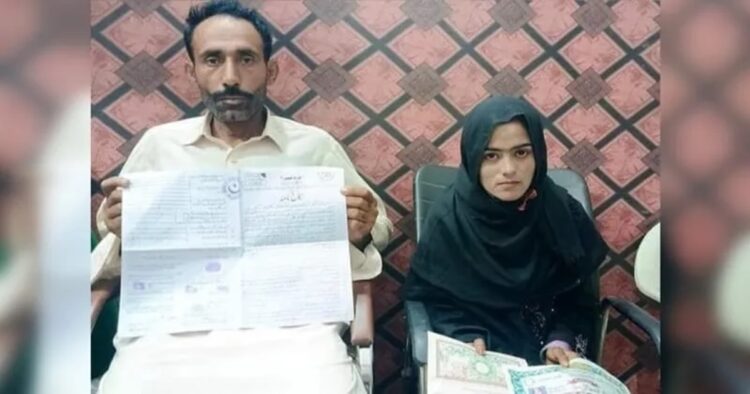A 15-year-old Hindu girl in the Sanghar district of Sindh province, Pakistan, on November 18 was forcibly converted to Islam and married to a 50-year-old Muslim man, Muhammad Bagh Ali, who is more than twice her age. After the forced conversion, the girl, now known as ‘Saima,’ was married to Ali against her will.
This incident is part of a troubling pattern of forced conversions and marriages of underage Hindu girls in Sindh, an area notorious for the persecution of religious minorities, particularly Hindus. A conversion certificate and court affidavit, allegedly stating the victim’s free will in the marriage, were prepared on November 18, following the forced conversion of a 15-year-old Hindu girl in the Sanghar district.
It is a common tactic used by radical Maulvis to present the forced marriage of a minor girl as if it were a voluntary decision made by a consenting adult, thereby attempting to legitimise the act. On One Maulana Abdul Ghafoor Mengal facilitated the forced conversion and marriage in this particular case.
The affidavit stated, “I have neither been coerced, abducted, nor pressured by anyone to leave my parents’ home. I willingly and of my own accord embrace Islam, following the teachings of Shariat-e-Muhammad (P.B.U.H.), as I am deeply impressed by the religion. I accept Islam voluntarily and with full consent, having done so in the presence of Molana Abdul Ghafoor Mengal.”.
This disturbing incident is not an isolated case. In the past, Pakistan has witnessed numerous instances of forced conversions and marriages of underage Hindu girls, particularly in regions like Sindh where religious minorities, especially Hindus, have been vulnerable to such coercion. These acts have raised serious concerns about the protection of minority rights in the country, as well as the exploitation of young girls in the name of religion. Despite international condemnation and local protests, the practice continues with many of these cases being dismissed or justified through dubious legal documents such as affidavits like the one in this case, aimed at portraying the coercion as voluntary.

















Comments